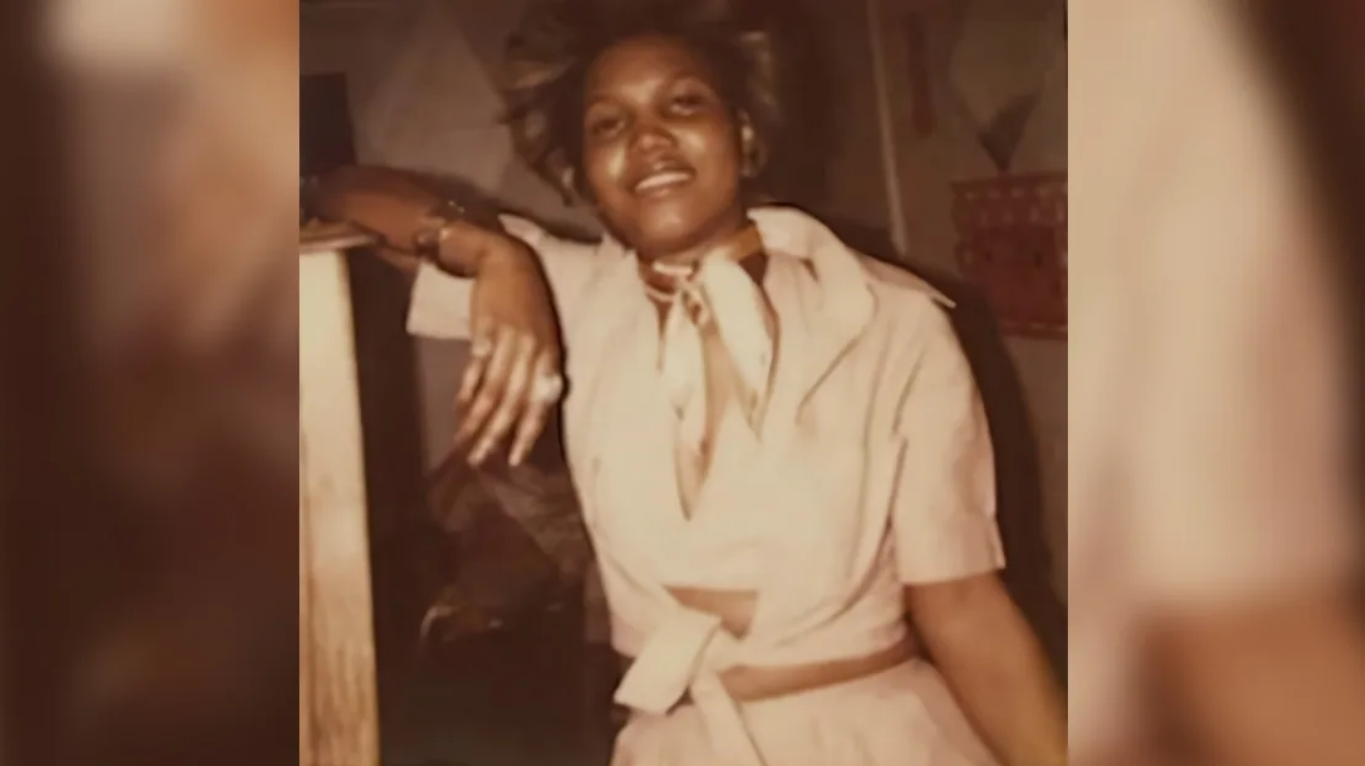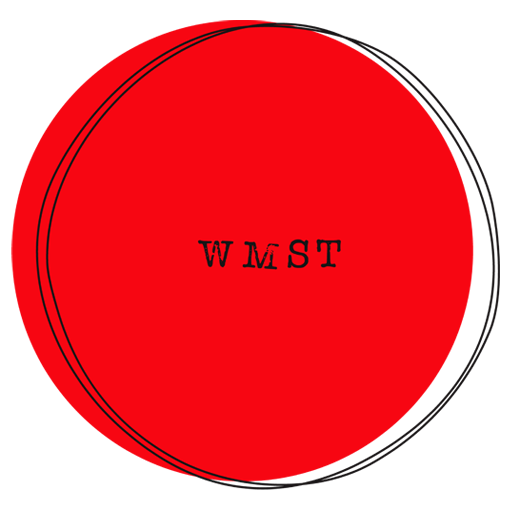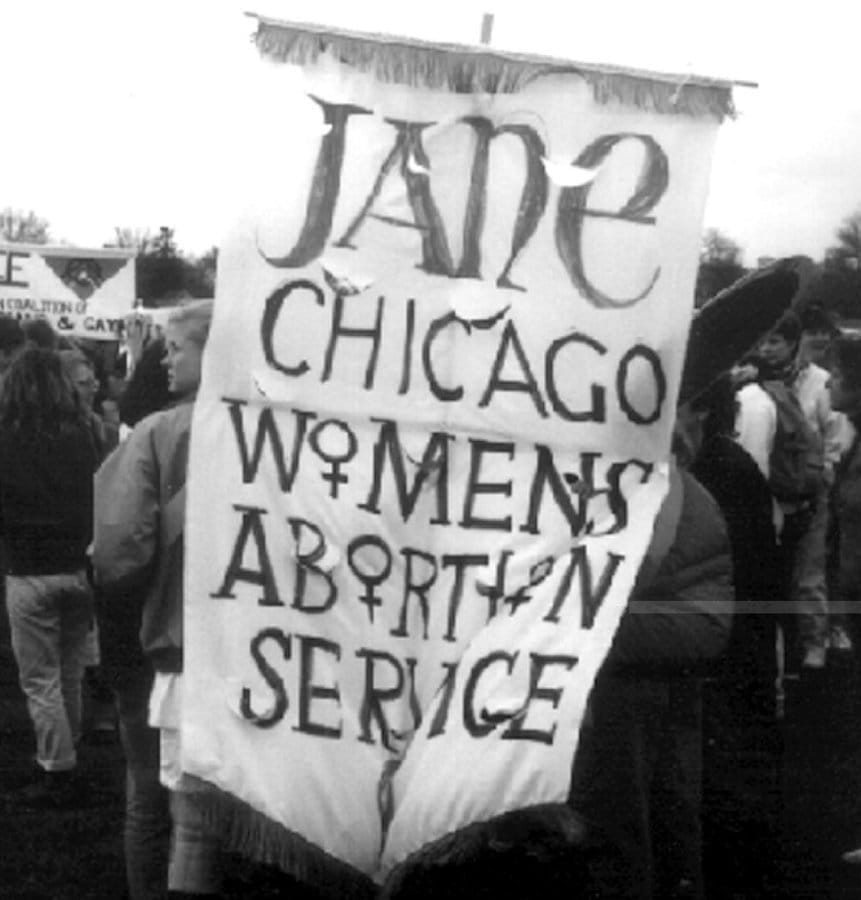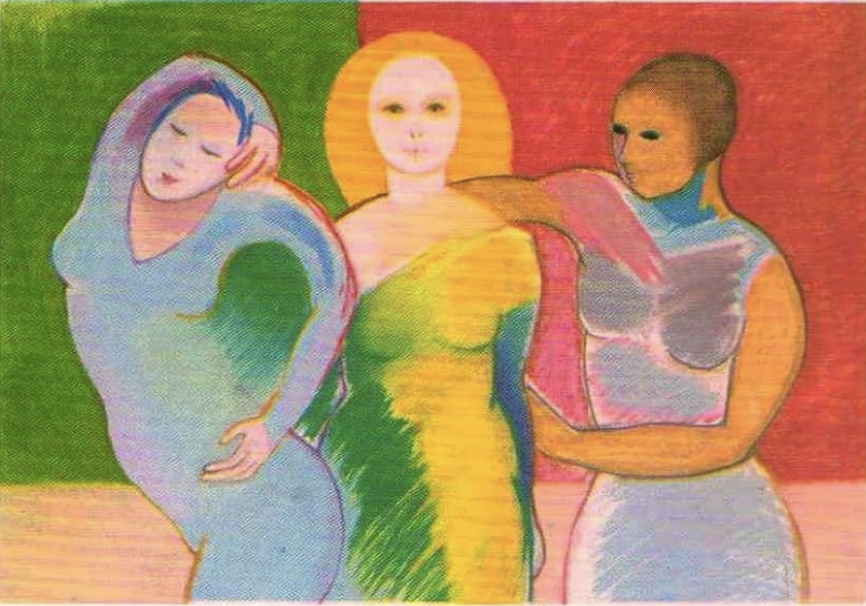The Jane Collective
The Jane Collective was an underground abortion service in Chicago started in 1969. According to The Story of Jane, by Laura Kaplan, the collective provided 11,000 abortions before it was shut down in 1973 (2017, Schwartz, Booth, Kaplan, Galatzer-Levy and Arcana).
Heather Booth: "In 1965, I was a college student at the University of Chicago. My friend’s sister was pregnant and not prepared to have a child. She was nearly suicidal, didn’t know what to do. My friend asked if I could help. I turned to the Medical Committee for Human Rights, which was the medical arm of the civil-rights movement, and was directed to Dr. T.R.M. Howard. I called him up and discussed the situation. My friend’s sister was treated. It worked out well. I didn’t think about it again. Then someone else called. Word must have spread" (2019, Schwartz, Booth, Kaplan, Galatzer-Levy and Arcana).

"Sakinah Ahad Shannon, now 75, was one of the few Black women who volunteered as a counselor at Jane. She joined after accompanying a friend who was charged a mere $50 for her abortion. At that time, Jane’s fee was between $1 and $100, based on what the woman could afford...What she heard and saw at her friend’s counseling session was so impressive it “changed my life,” Shannon said. She and her family later opened and operated three Chicago abortion clinics for over 25 years, all using the Jane philosophy of communication and respect. It was a profoundly amazing experience for me,” she said. “I call the Janes my sisters. The color line didn’t matter. We were all taking the same risk" (2023, LaMotte).

Before Roe v. Wade
The dangers faced by women seeking abortions in the pre-Roe v. Wade era are well-documented. In 1930, abortion was listed as the official cause of death for almost 2,700 women in the United States, though there were likely many more unrecorded mortalities. After antibiotics were introduced in the 1940s, the number of women dying from illegal abortions dropped dramatically. However, every year, thousands of women continued to be admitted to hospitals nationwide for complications from illegal abortions (2018, Gilles et al.)
In the 1950s and 1960s, it was estimated that 200,000–1.2 million illegal abortions occurred annually. Women sometimes died as a result of these procedures, accounting for 17% of all deaths attributed to childbirth and pregnancy in 1965. Nationwide, the abortion-related mortality rate for women of color was twelve times greater than that of white women from 1972–1974 (2003, Benson Gold).
For those who could obtain an illegal abortion, results were mixed. Some women experienced hemorrhaging or sepsis. Others paid for abortions only to still be pregnant afterwards from a botched procedure (1988, Messer and May).
Jane's Structure and Services
Within this anti-abortion context, Jane made itself available to women in dire need of abortions. The services of the Jane Collective spread through word of mouth. The organization also reached women through posting signs in the city that read, "Pregnant? Don't want to be? Call Jane", listing the phone number. The number directed the caller to an answering machine, where they were instructed to leave their name, phone number, and date of their last period. The woman would then be contacted by a member of the Collective, who would schedule a meeting to discuss the procedure (2018, Gilles et al.).
If the woman decided to proceed with the abortion, she was given the address of "The Front" – one of the many apartments that the Collective rented throughout the city. Before the abortion, the patient and a member of Jane would meet at The Front, where the patient would then be driven to a second location to undergo the abortion (2018, Gilles et al.).
At first, Jane connected women with doctors who preformed the abortions. But eventually, some of the group's members started performing abortions themselves. This meant they could reduce the price of the procedure and reach a larger, and more diverse, population. Doctors often charged $500 to perform the procedure. Jane charged $100 but took whatever the clients could pay. They used the money they received to pay for supplies, rent and other expenses. At their peak, Jane was performing abortions four days a week and typically serving 10 women a day. No deaths were ever reported of women who had abortions through Jane (2018, Gilles et al.)
"We were arrested in May 1972. The Supreme Court decision came down in January 1973. Everybody knew that the Supreme Court was debating the case. It was then a question of waiting to hear the verdict. After the Roe decision, the courts cut a deal with us that if we didn’t ask for our instruments back — they had grabbed all the stuff — they would not charge us for practicing medicine without a license. We said okay — we didn’t need the instruments anymore — and that was it... The first clinics opened in early spring. A few months later, we had a party. Everybody who had been involved was invited. The guy who wasn’t a doctor — he was there. All of us were there. By then we were fed up with one another. I think we were mostly burned out and happy to step back from the project. So we had our end-of-Jane party. And we all went our separate ways" (2017, Schwartz, Booth, Kaplan, Galatzer-Levy and Arcana).
The Past Meets the Present
Abortion access has become increasingly restricted and continues to be a battleground for women. By 2018, the number of abortion clinics in the US declined by nearly half since the late 1970s (2018, Presser). In 2022, the US Supreme Court overruled Roe v. Wade in the decision Dobbs v. Jackson Women's Health Organization. With abortion banned or highly restricted in several US states, the rise of underground abortion collectives and organizations is real and possible. The legacy of the Jane Collective lives on as women continue to seek access to abortion services and other vital health care.
Questions To Consider
- When did you first hear about The Jane Collective and what did you understand about their operation?
- Do you think underground abortion services similar to The Jane Collective are currently operating in the US since Roe v. Wade was overturned in 2022?
- Do you believe women were choosing abortions for different reasons in the 1960's-70's versus now?
- Let's talk about women's access to contraception and abortion and how this access intersects with the conditions of women's lives.
Resources
Kaplan, Laura (1997). The Story of Jane: The Legendary Feminist Abortion Service. New York: University of Chicago Press.
The Janes - HBO documentary that offers first-hand accounts from the women at the center of the group, many speaking on the record for the first time.
Call Jane - a feature length film about the Jane Collective, starring Sigourney Weaver and Elizabeth Banks
Jane: Abortion and the Underground - a play by Paula Kamen. This play requires no fee for pro-choice fundraisers
References
Benson Gold, Rachel (2003, March 1). "Lessons from Before Roe: Will Past be Prologue?". Guttmacher Institute. https://www.guttmacher.org/gpr/2003/03/lessons-roe-will-past-be-prologue
De Mar, C. (2022, September 13). Crowd learns firsthand about Jane Collective, underground abortion network in pre-Roe Chicago. CBS News. https://www.cbsnews.com/chicago/news/crowd-learns-firsthand-about-jane-collective-underground-abortion-network-in-pre-roe-chicago
Gilles, N., Kramer, S., and Richman, J. (2018, January 19). Before 'Roe v. Wade,' The Women of 'Jane' Provided Abortions For The Women Of Chicago. NPR. https://www.npr.org/2018/01/19/578620266/before-roe-v-wade-the-women-of-jane-provided-abortions-for-the-women-of-chicago
LaMotte, S. (2023, April 23). These women ran an underground abortion network in the 1960s. Here's what they fear might happen today. CNN. https://www.cnn.com/2023/04/23/health/abortion-lessons-jane-wellness/index.html
Messer, E.; May, K. E. (1988). Back rooms: Voices from the illegal abortion era. St. Martin's Press.
Presser, L. (27 August 2018). "Inside the secret network providing home abortions across the US". The Guardian. https://www.theguardian.com/world/2018/aug/27/inside-the-secret-network-providing-home-abortions-across-the-us
Schwartz, M., Booth, H., Kaplan, L., Galatzer-Levy, J., and Arcana, J. (2019, May 15). Jane Does, by Madeleine Schwartz, Heather Booth, Laura Kaplan, Jeanne Galatzer-Levy, Judith Arcana. Harper's Magazine. https://harpers.org/archive/2017/04/jane-does/
Comment
About Women's Studies Mini-Courses
Women's Studies Online is here to introduce herstorical feminist theories, actions, concepts, media, and anything else we can think of in bite-sized pieces.
Written collaboratively, WMST's mini-courses aim to shine light on important and useful feminist ideas in an easy-to-understand format.



